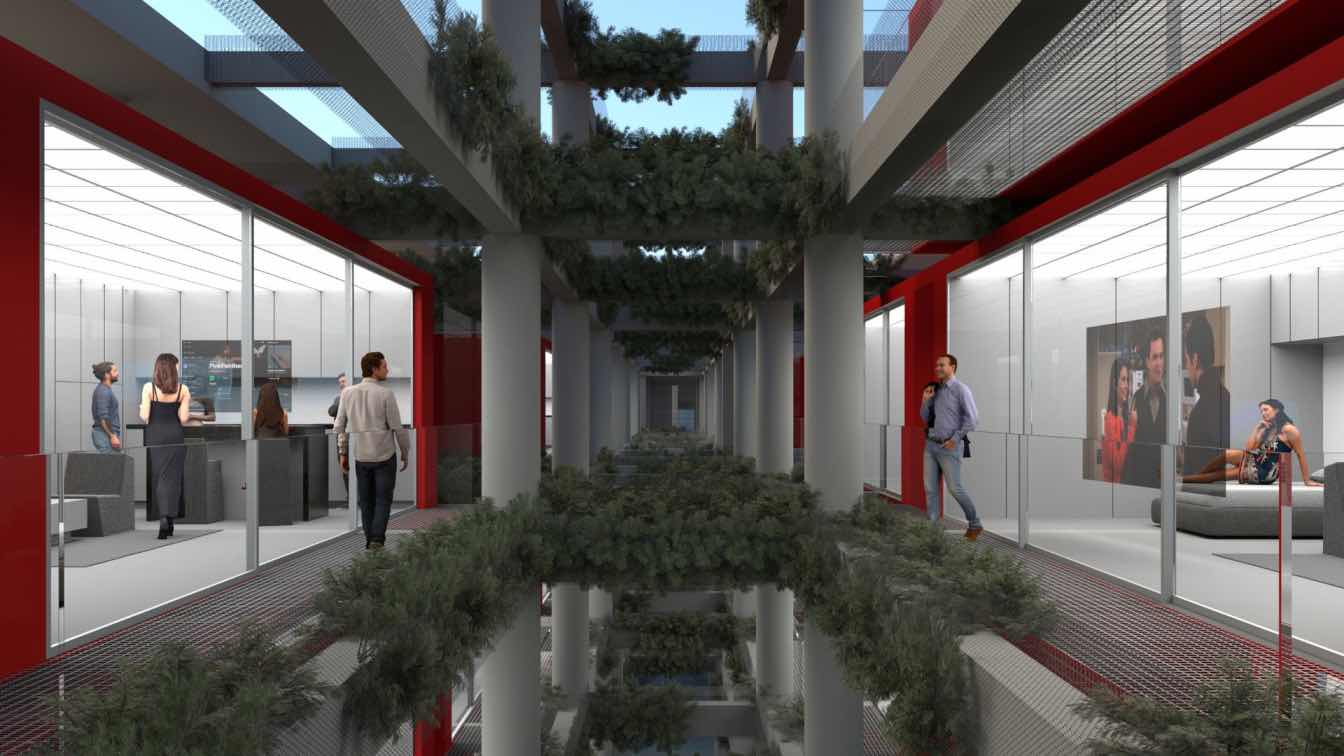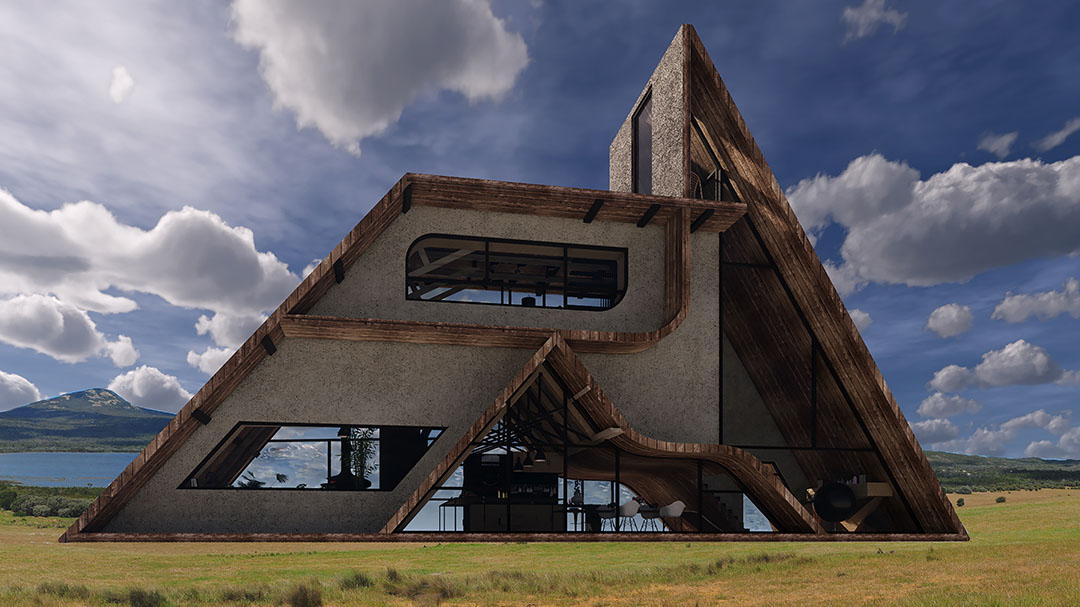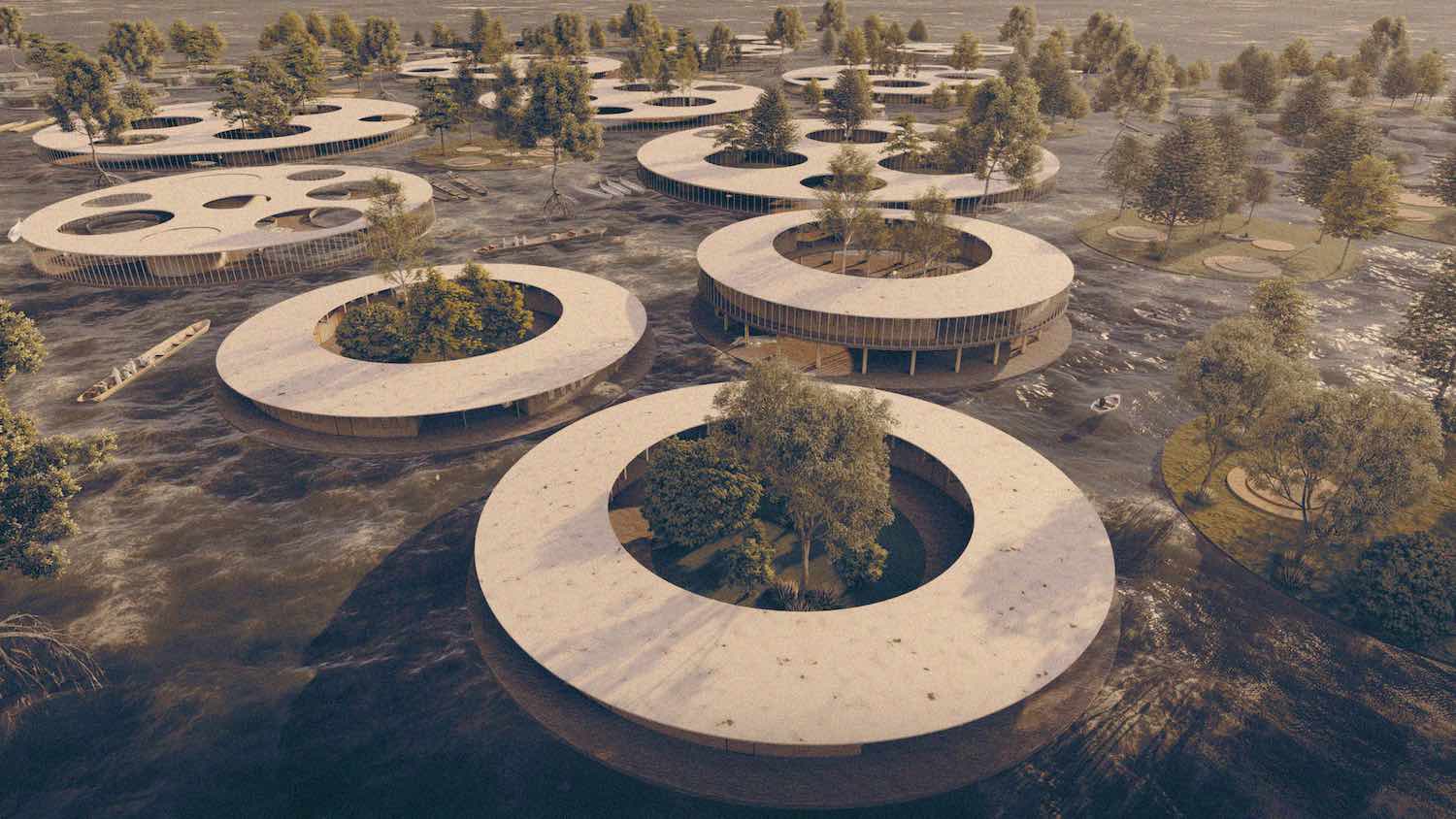George Genovezos & Lam Faraj: Augmented Living is a project that combines an augmented reality system, physical elements, and live activities. The intervention consists of housing units that alternate levels as they develop within the deconsecrated OLPA building. On the ground floor there is a swimming pool with its ancillary spaces. The main entrances to the complex are located on either side of the pool. At the back there is also a club. With the live programs on the ground floor and mezzanine we wanted to create a counterpoint to the digital nature of the upper floors. On the mezzanine floor there is a kaiten sushi bar and the apartments begin to develop. Horizontal circulation is via the perimeter corridors. The apartments are positioned opposite each other creating a neighborhood condition. Residents have visual contact with the sky and the active ground floor. Vertical circulation takes place via the staircases at the two ends of the building.
In the proposal we maintain a strict orthonormal layout. The additional elements of our intervention are distinguishable within the modernist OLPA building. An augmented reality system is applied to the apartments. This technology complements the daily lives of residents through communication, entertainment and further conveniences. The AR system is activated by focusing the user's eyes on the intangible dot.
The dot is locked at a specific x, y, z point by the user. After looking at it, the AR-Pad opens, a menu with the applications grouped together. Navigation, tap and typing are possible through hand and finger movement detection using infrared light emission, the same technology we use to unlock our phones today. The system's control center is located in the ring that gives it these capabilities only when worn. Built into it are a microphone, camera and speaker, for telecommunications outside the home. To facilitate the user inside the house for video calls, a microphone and camera system is mounted that follows the user. To show the possibilities of the AR system, we imagined three scenarios. In the first, the user watches a movie. In the second, the user plays a game of chess with an online opponent. In the third, the user has forgotten many tabs open, making the room messy. As users take advantage of the benefits of technology, an oasis awaits them that revitalizes the interior of the complex. Planting is possible thanks to the air pockets, located in the OLPA beams. Although it is an innovative technology, errors are also possible.
























